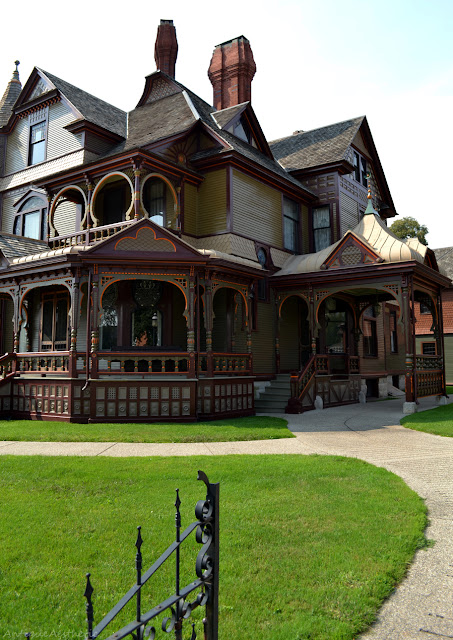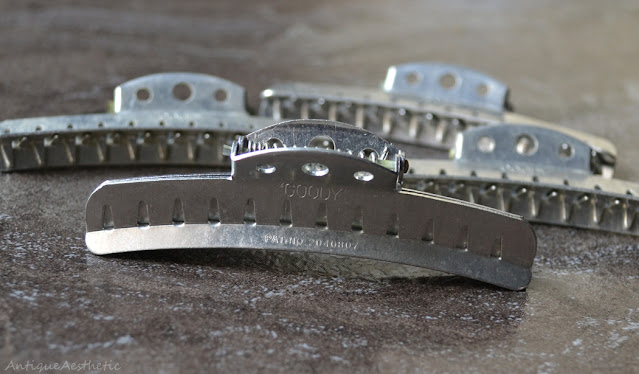"It was a man dressed all in scarlet, with a huge hat and feathers on the top of a wonderful death's-head. From his shoulders hung an immense red-velvet cloak, which trailed along the floor like a king's train; and on this cloak was embroidered, in gold letters, which everyone read and repeated aloud:
'Touch me not! I am Red Death stalking abroad!'"
-quoted from The Phantom of the Opera, by Gaston Leroux
On September 6, 1925, the silent film horror masterpiece The Phantom of the Opera, starring Lon Chaney and Mary Philbin, premiered in theaters. The film, besides being known as the visual adaptation of Gaston Leroux's 1910 novel of the same name, is one of the first films to include color sequences. The "color" at the time was called Process 2 Technicolor, or Technicolor II, which was a base of two colors, red and green. This process was used for the scenes of the party-goers at the masquerade ball, which is famously remembered by the dramatic entrance of the Phantom in a costume representing the Red Death, from Edgar Allan Poe's short story The Masque of the Red Death. This scene, dazzling audiences with the bright red grandeur of his costume, caused a stir in the fashion scene.
This bright, bold color was coined "phantom red", and Paris declared it the color of the fall/winter 1925-1926 season. Store windows were essentially painted red as retailers took no time to advertise any and all products that could be produced in this color, from clothing, shoes, cosmetics, and even food.
These advertisements lasted until about 1930, when the Phantom Red line became just another cosmetic brand. The advertisements, which always emphasized the "phantom-like" quality of the makeup(although wearing makeup was not as stigmatized as it was in years prior,
it still liked to advertise itself as being subtle and natural), started to focus only on that, and no longer mentioned the film as its inspiration. These advertisements also give a first look as to what the packaging actually looks like, since the advertisements from the 1920's don't really show them.

Note that even though the image of the Phantom is still on the compact, there isn't one mention of the film.
(source)

I was never able to find the source of this image, which is a shame because it's the only color advertisement I've seen for Phantom Red. Any information is greatly appreciated!
In my research I've found almost no information after the early 1930's about this cosmetic line, and the name "phantom red" seemed to practically disappear as a color choice. Its swift disappearance is also represented in its current rarity, as I've never once seen a Phantom Red lipstick outside of the later advertisements. No matter how many years and how many hours I've spent scouring the internet to find a physical antique, the only Phantom Red product I've seen is a cardboard display for the brow product alone(and boy was it pricey!).
However, after mostly giving up on ever adding a Phantom Red product to my cosmetic collection, my luck changed and I found an eBay seller offering a rouge compact sporting those coveted words "PHANTOM RED" on the lid. My heart skipped a beat when I saw this, and although the compact was empty(and looks to have been heart-breakingly scrubbed clean), I couldn't resist adding this rare piece of 1920's fashion history to my collection, and promptly purchased it for far more than I would ever spend on an empty compact.
Although I am over the moon to have been able to add this to my collection, I will continue to look for my holy grail Phantom Red item, the lipstick. How does the lipstick color compare to the Phantom's costume? The tube from the 1930's is black, but what about the one from the 1920's? Is it metal like the compact I own? Since my compact doesn't look like the ones in the 1930's ads, when was mine produced? What does the rouge powder look like, is it a true red, or just a bright pink, like most other rouge colors I've seen from the era? With every answered question I have so many unanswered ones, but I'm holding out hope that one day I will know all there is to know about the rare, elusive, and bold color known as Phantom Red!
Further Research:
Wikipedia: The Phantom of the Opera(film)
Wikipedia: The Phantom of the Opera(novel)
Wikipedia: Process 2 Technicolor
Phantom Colours: Alice Blue and Phantom Red; Changing Meanings of Two Fashionable Colours (1905-1930) - article about the impact of these colors







































































